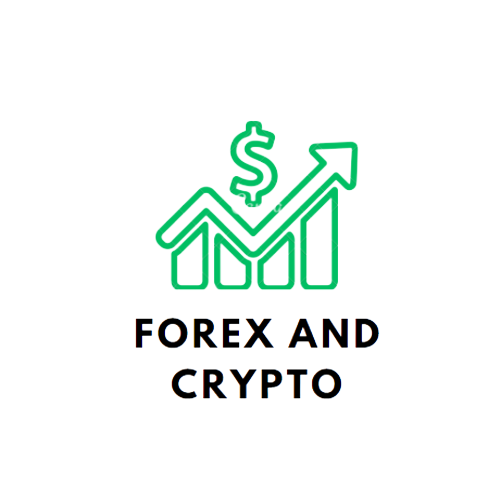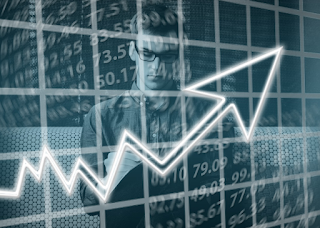Hey there, fellow Forex aficionados! 🚀 Ready to unlock the secrets of "Long-Term Forex Trading"? Buckle up; we're about to embark on a thrilling journey through the world of economic indicators and how they can steer your trading success.
The Forex Trader's Holy Grail: Economic Indicators
In the realm of Forex trading, economic indicators are like X-ray vision goggles. They allow you to see beneath the surface of the market, deciphering the economic health of a country. These vital clues help you make informed decisions and steer your ship towards profitable waters.
Charting Your Course - The GDP Indicator
Picture the GDP indicator as your financial compass. GDP (Gross Domestic Product) represents the overall health of a country's economy. It tells you if the country is growing (bullish) or contracting (bearish). 📈📉
Action Plan: Keep an eye on GDP reports, especially when you're trading currencies from economies with a significant impact on global trade.
Riding the Waves - Interest Rates
Interest rates are like the tide that lifts or lowers all boats. Central banks set interest rates, influencing borrowing costs and, in turn, the flow of capital into or out of a country. 🌊
Action Plan: Track interest rate decisions and statements from central banks, as they can trigger significant market movements.
Inflation: The Silent Assassin
Inflation is the sneaky ninja of economic indicators. It erodes the purchasing power of a currency, affecting its value. High inflation can spell trouble for a nation's currency. 💸
Action Plan: Monitor inflation reports to gauge the potential impact on currency values. Be prepared for swift market reactions.
The Trade Balance: Balancing Act
The trade balance is like a country's financial diet plan. It shows the balance between imports and exports. A trade surplus (exports > imports) can strengthen a currency, while a deficit (imports > exports) can weaken it. 🍽️
Action Plan: Keep an eye on trade balance reports, especially when trading currencies tied to nations with substantial trade activity.
Employment Data: The Workforce Pulse
Employment data, including non-farm payrolls, unemployment rates, and job creation, offer a glimpse into a nation's job market health. A strong labor market can boost a currency. 💼
Action Plan: Watch out for employment reports as they can drive market volatility, particularly around the release time.
The Ultimate Journey to Success - Economic Indicators and Long-Term Forex Trading
Now, you're armed with the knowledge of how economic indicators impact the Forex market. Long-term Forex trading isn't just a gamble; it's a calculated journey. The key to success is understanding these indicators, incorporating them into your trading strategy, and staying up-to-date with their releases.
Understanding Economic Indicators
Economic indicators are statistics and data points reflecting a nation's economic health. They offer traders insights into the current and future economic conditions of a country, affecting its currency's strength or weakness. Let's delve into some key economic indicators and their significance in long-term Forex trading:
Gross Domestic Product (GDP): The Economic Pulse
GDP is the most comprehensive measure of a country's economic performance. It represents the total value of all goods and services produced within a country. For long-term Forex traders, understanding the GDP of the currencies being traded is fundamental.
Bullish GDP: A growing GDP indicates a strong economy, potentially leading to currency strength.
Bearish GDP: A declining GDP suggests economic woes, possibly leading to currency weakness.
Action Plan: Keep a close eye on GDP releases, especially for currencies from economically influential nations.
Interest Rates: The Monetary Leverage
Interest rates are a pivotal economic indicator, as they directly influence a country's currency value. Central banks control interest rates, affecting borrowing costs and capital flows. Higher interest rates generally attract foreign capital, strengthening a currency.
Action Plan: Pay attention to interest rate decisions and central bank statements, as they can trigger significant market movements in the long run.
Inflation: The Value Eroder
Inflation measures the increase in the general price level of goods and services over time. High inflation can erode the purchasing power of a currency, making it less attractive to investors.
Action Plan: Monitor inflation reports to gauge their potential impact on currency values, especially when trading for the long term.
Trade Balance: The Commerce Indicator
A country's trade balance reflects the difference between its exports and imports. A trade surplus (exports > imports) can strengthen a nation's currency, while a trade deficit (imports > exports) can weaken it.
Action Plan: Keep an eye on trade balance reports, especially when trading currencies associated with nations with significant trade activity.
Employment Data: The Labor Force Mirror
Employment data, including non-farm payrolls, unemployment rates, and job creation, provide insights into a nation's labor market health. Strong employment data can boost a currency.
Action Plan: Stay informed about employment reports, as they can drive market volatility, particularly over the long term.
Remember: Markets can be as unpredictable as the weather, and economic indicators are your meteorological reports. Use them wisely, be patient, and take the long view. 🌦️
So, there you have it - a guide to navigating the labyrinth of economic indicators for Long-Term Forex Trading. With this knowledge, you're equipped to make more informed, strategic trading decisions. May your Forex adventures be profitable and your economic indicators ever in your favor! 💰🌟
Ready to set sail in the world of "Long-Term Forex Trading"? Explore more, keep learning, and happy trading! ⚓


